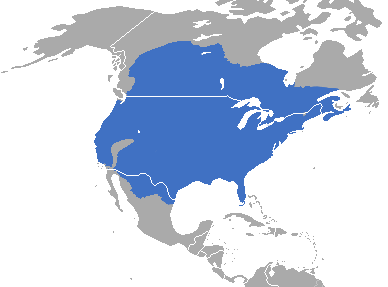 |
Canku Ota
|
 |
|
(Many Paths)
|
||
|
An Online Newsletter
Celebrating Native America
|
||
|
July 2016 - Volume 14
Number 7
|
||
|
|
||
|
Skunk
(Mephitis mephitis) |
||
|
by National Geographic
|
||
Skunk spray causes no real damage to its victims, but it sure makes them uncomfortable. It can linger for many days and defy attempts to remove it. As a defensive technique, the spray is very effective. Predators typically give skunks a wide berth unless little other food is available. There are many different kinds of skunks. They vary in size (most are house cat-sized) and appear in a variety of striped, spotted, and swirled patterns—but all are a vivid black-and-white that makes them easily identifiable and may alert predators to their pungent potential. Skunks usually nest in burrows constructed by other animals, but they also live in hollow logs or even abandoned buildings. In colder climates, some skunks may sleep in these nests for several weeks of the chilliest season. Each female gives birth to between two and ten young each year. Skunks are opportunistic eaters with a varied diet. They are nocturnal foragers who eat fruit and plants, insects, larvae, worms, eggs, reptiles, small mammals, and even fish. Nearly all skunks live in the Americas, except for the Asian stink badgers that have recently been added to the skunk family. |
|
|
|
|
||
|
|
||
| Canku Ota is a free Newsletter celebrating Native America, its traditions and accomplishments . We do not provide subscriber or visitor names to anyone. Some articles presented in Canku Ota may contain copyright material. We have received appropriate permissions for republishing any articles. Material appearing here is distributed without profit or monetary gain to those who have expressed an interest. This is in accordance with Title 17 U.S.C. Section 107. | ||
|
Canku Ota is a copyright ©
2000 - 2016 of Vicki Williams Barry and Paul Barry.
|
||
 |
 |
|
|
The "Canku
Ota - A Newsletter Celebrating Native America" web site and
its design is the
|
||
|
Copyright ©
1999 - 2016 of Paul C. Barry.
|
||
|
All Rights Reserved.
|
||
